Welcome! We are excited to introduce you to Custom Meeting Templates with Meetical.
Meetical comes with a great default Meeting Template but if you want to go beyond that here is how to create your own templates. On Cloud you get several Meeting Templates pre-installed, such as a Team Meeting templates, a 1-on-1 Meeting Template as well as a tactical and strategic Meeting Template.
This guide explains you how to create your own custom Meeting Templates in Confluence.
You should also have successfully installed and setup the Meetical Confluence App before following this guide. Also, make sure your Meetical Confluence Server App is up to date and you have the most recent version installed.
You can use both global templates and space templates
Currently we offer these customization options:
- A) Use Macros to put Date, Time, Location, Attendees... exactly where you want them and fully customize your pages.
- B) Place a complete Meeting Overview Table and customize the rest of the template.
Let's explore these options now.
1. A) Use Meeting Macros to put Date, Time, Attendees, Location... exactly where you want them in your template.
.png)
- Navigate to the Space Templates Section in one of your Spaces.
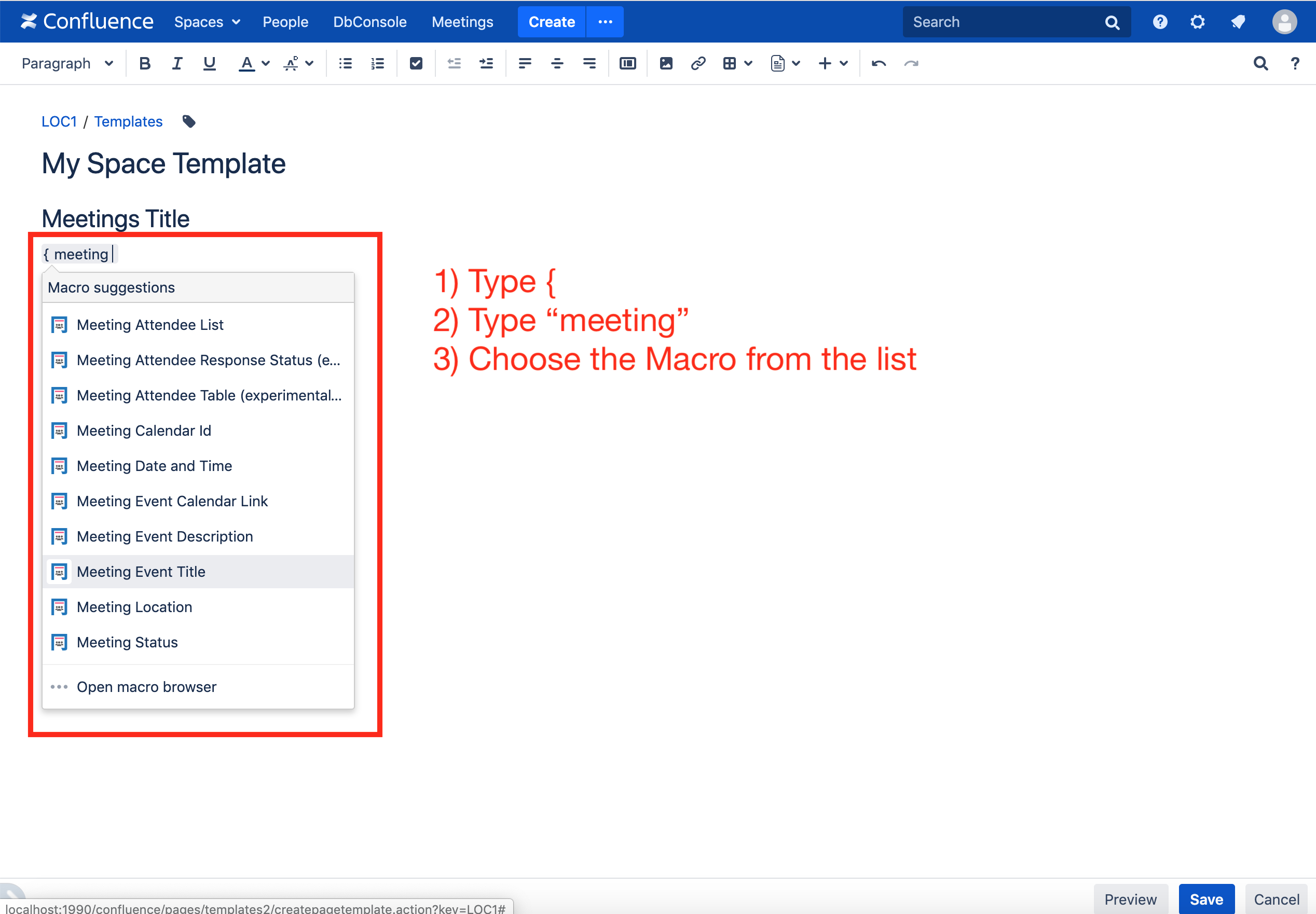
- Type { to open the quick macro browser
- Alternatively use the "Add Macro" Menu Item in the Editor and Search for "Meeting".

- Click on 'Add Label' to label the template as Meetical Template
- Important: The Template will later on only appear in the list of templates if it has the label "meetical-template". We do this to only show templates relevant for Meetings.
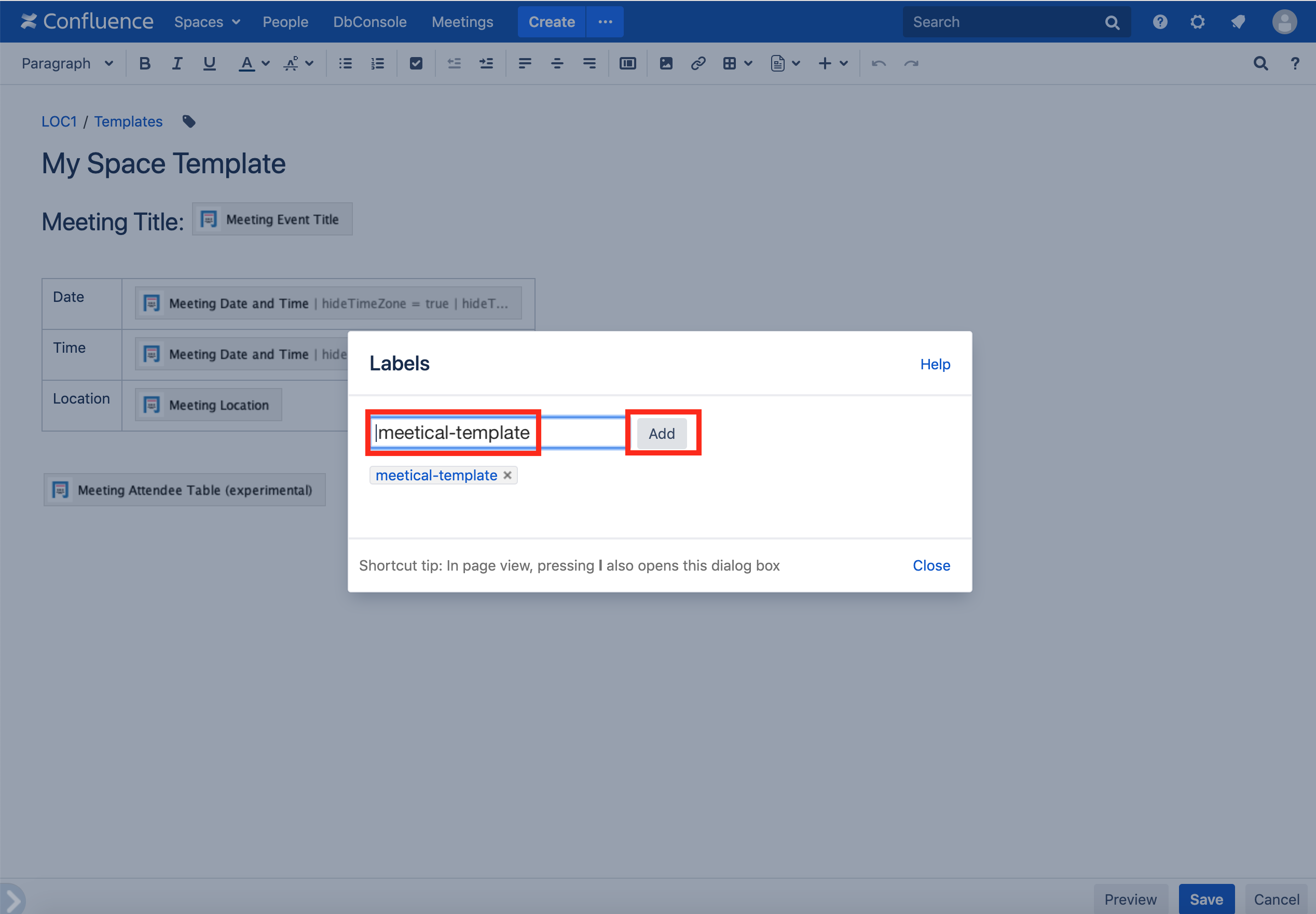
- Add the label "meetical-template" to your template.
- Optionally add other labels like "meeting-notes", "tactical-meeting" you wish to apply for all pages using this template.
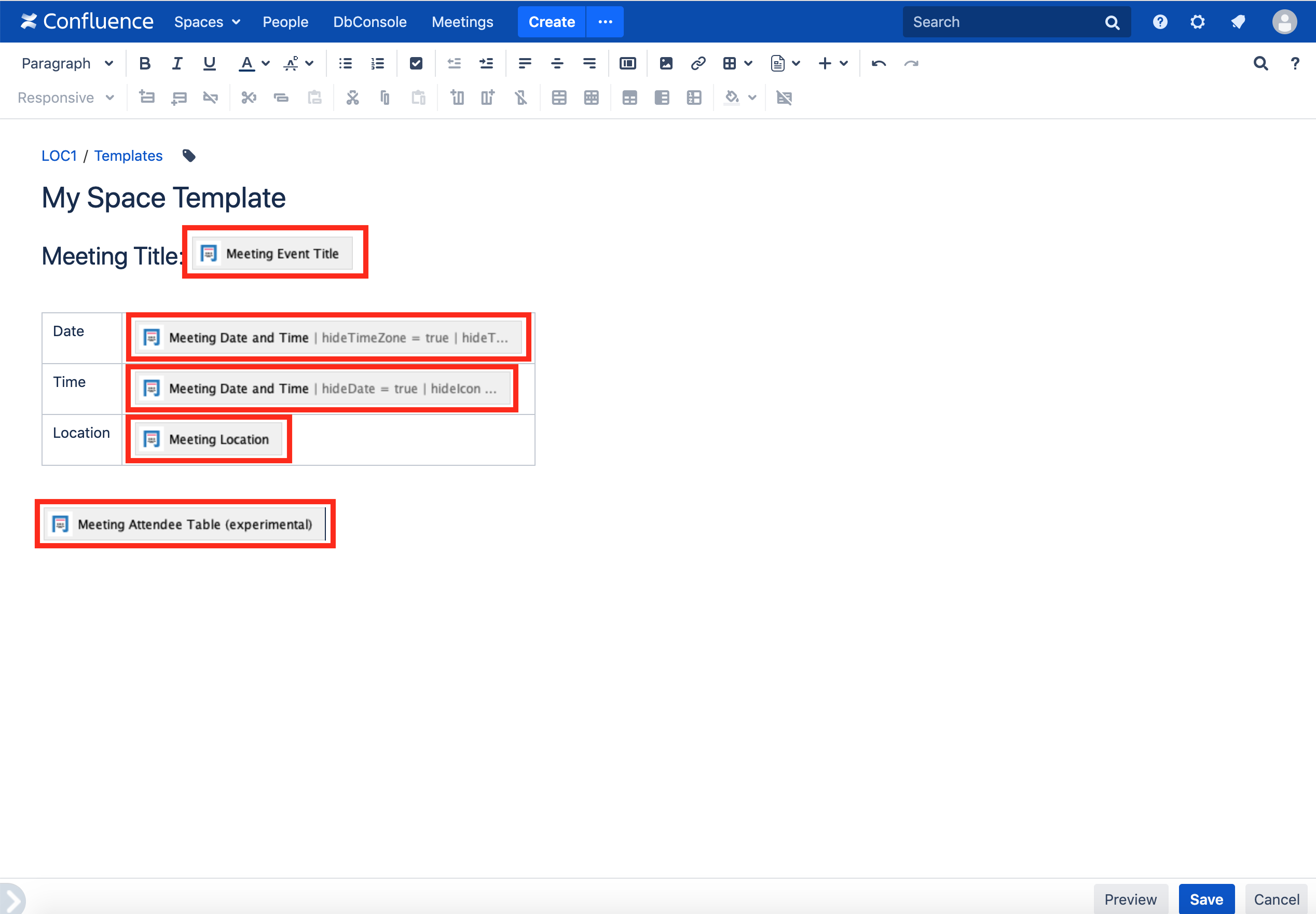
- Place all macros you would like to show where ever you want them to appear.

- Some macros you can further customize. Double click or click on 'Edit' on the macro.
- In this example we customize the Meeting Date and Time Macro to only show the Time
2. Save the template and your template will appear in the list of templates.

- Navigate to "Meetings" in Confluence in the Main Menu.
- Create a page for a meeting event on your calendar.
- Choose the space where you created the template.
- Choose the template from the list.
- Create the page.
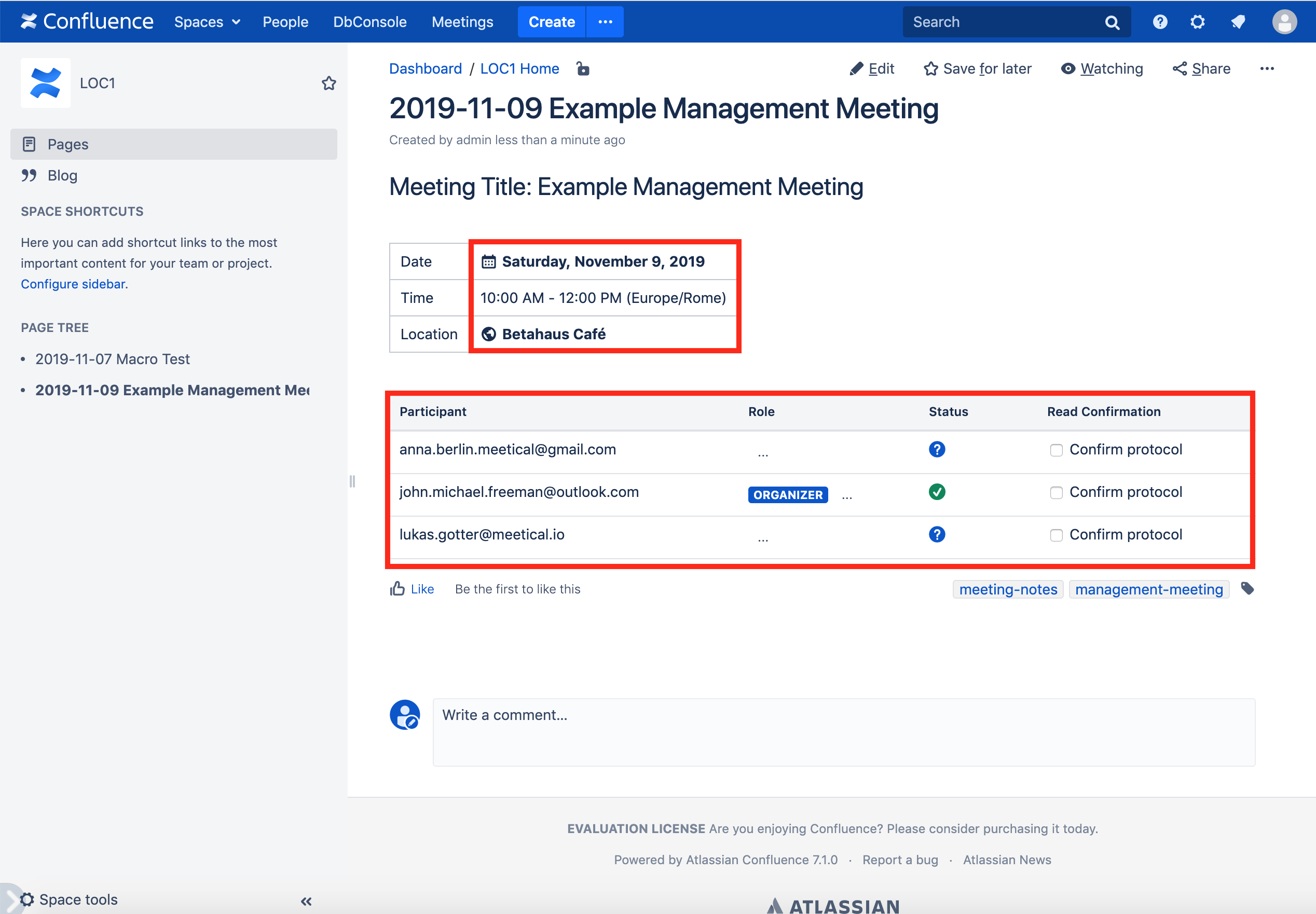
- Great. This is how your resulting page could look like
Congratulations, you just created a custom Meeting Template for Meetical.
In the next section we want to keep using the default Meetical template which includes a page property table. But we want to put that table into our own custom layout.
3. B) Place a Meeting Overview Table on your custom template.
.png)
- Again, start by navigating to the Space Templates Section in one of your Spaces.

- Create a template.
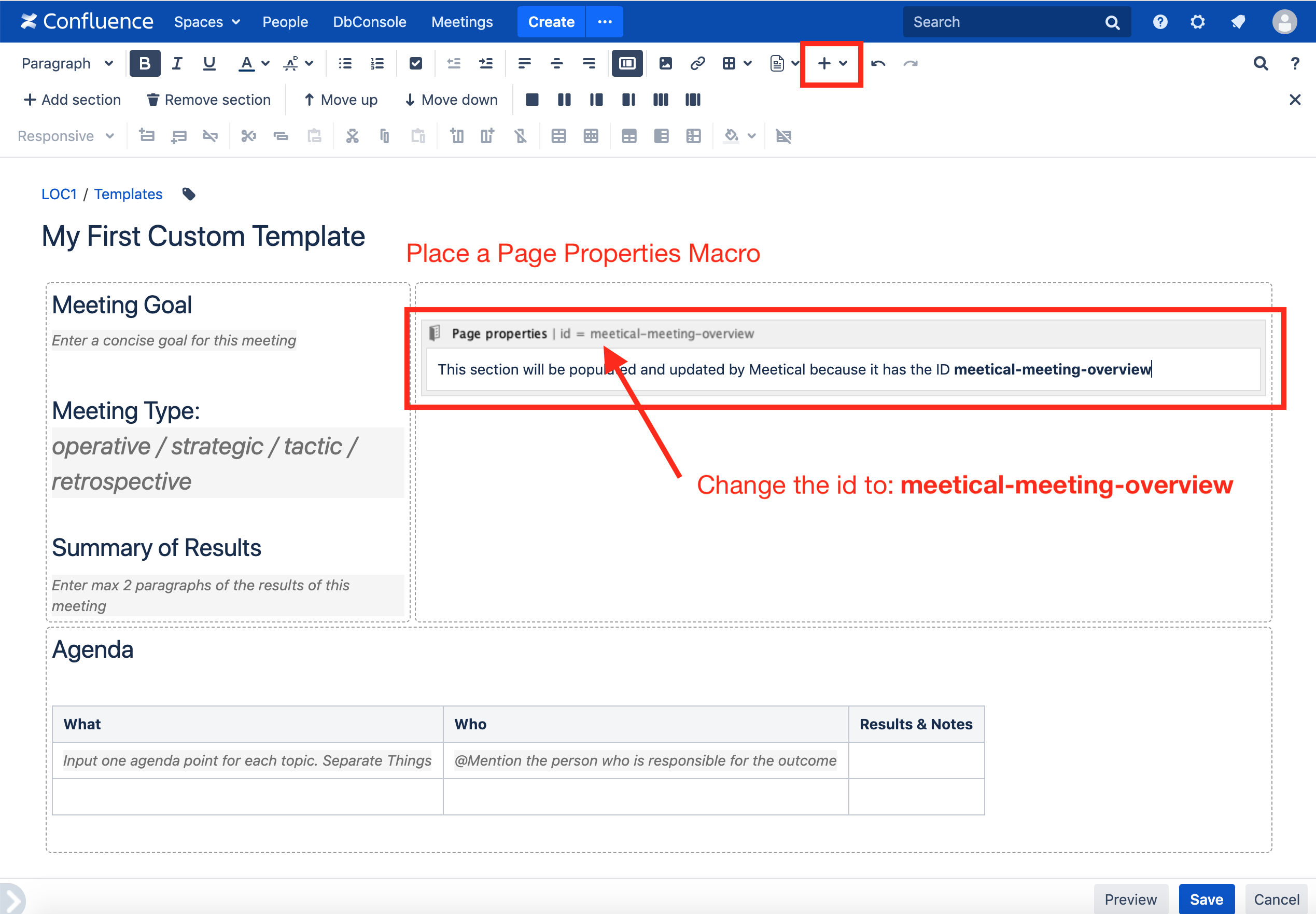
- Add page properties macro.
- Important: Give the macro the ID meetical-meeting-overview.

4. Great, you created your first template.
Now the template will appear in the list of Templates when you create a Page in that Space.
To test the template, create a meeting in your Calendar and navigate to Meetings in Confluence.
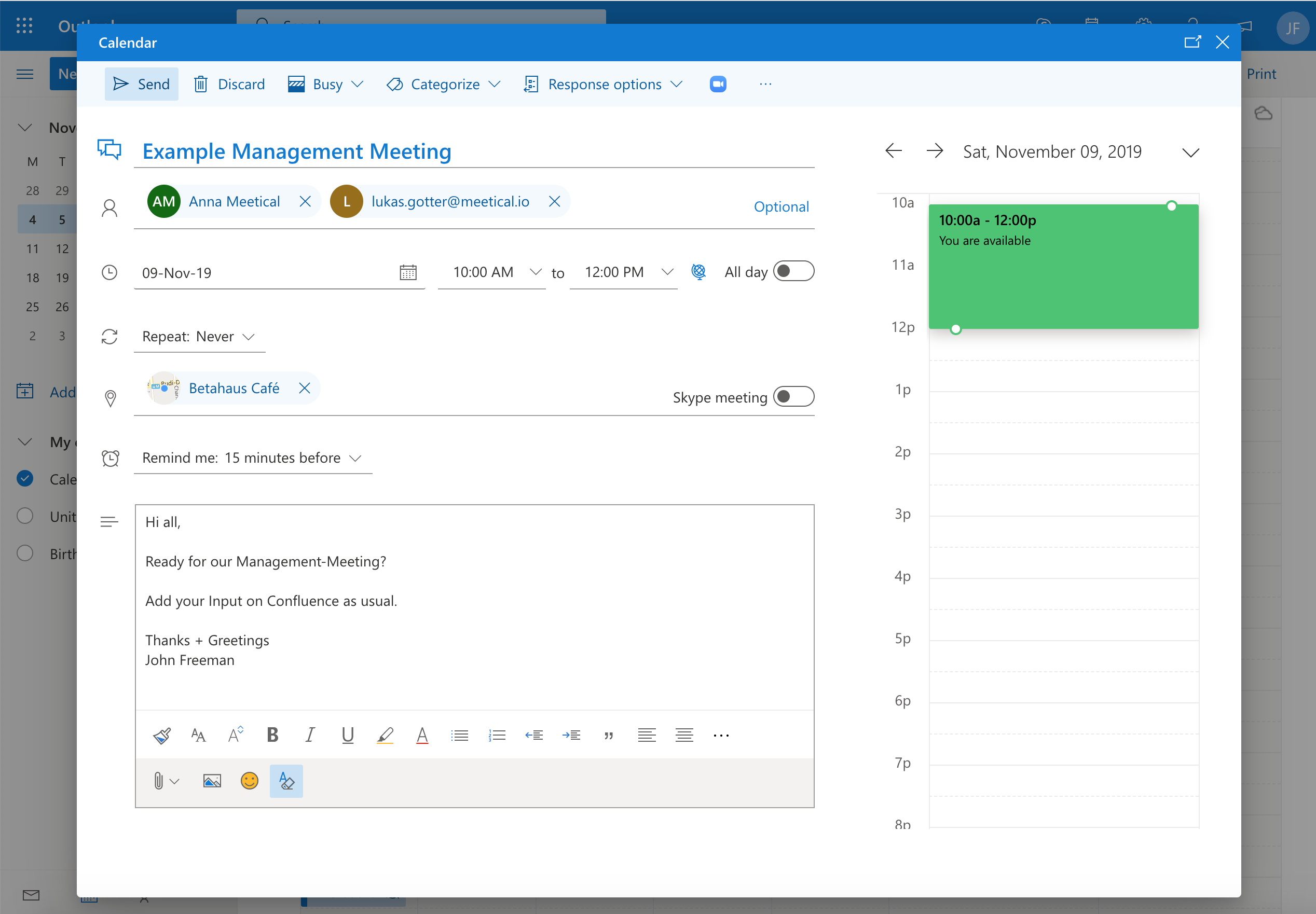
- Create a meeting in your calendar. Or use an existing one.
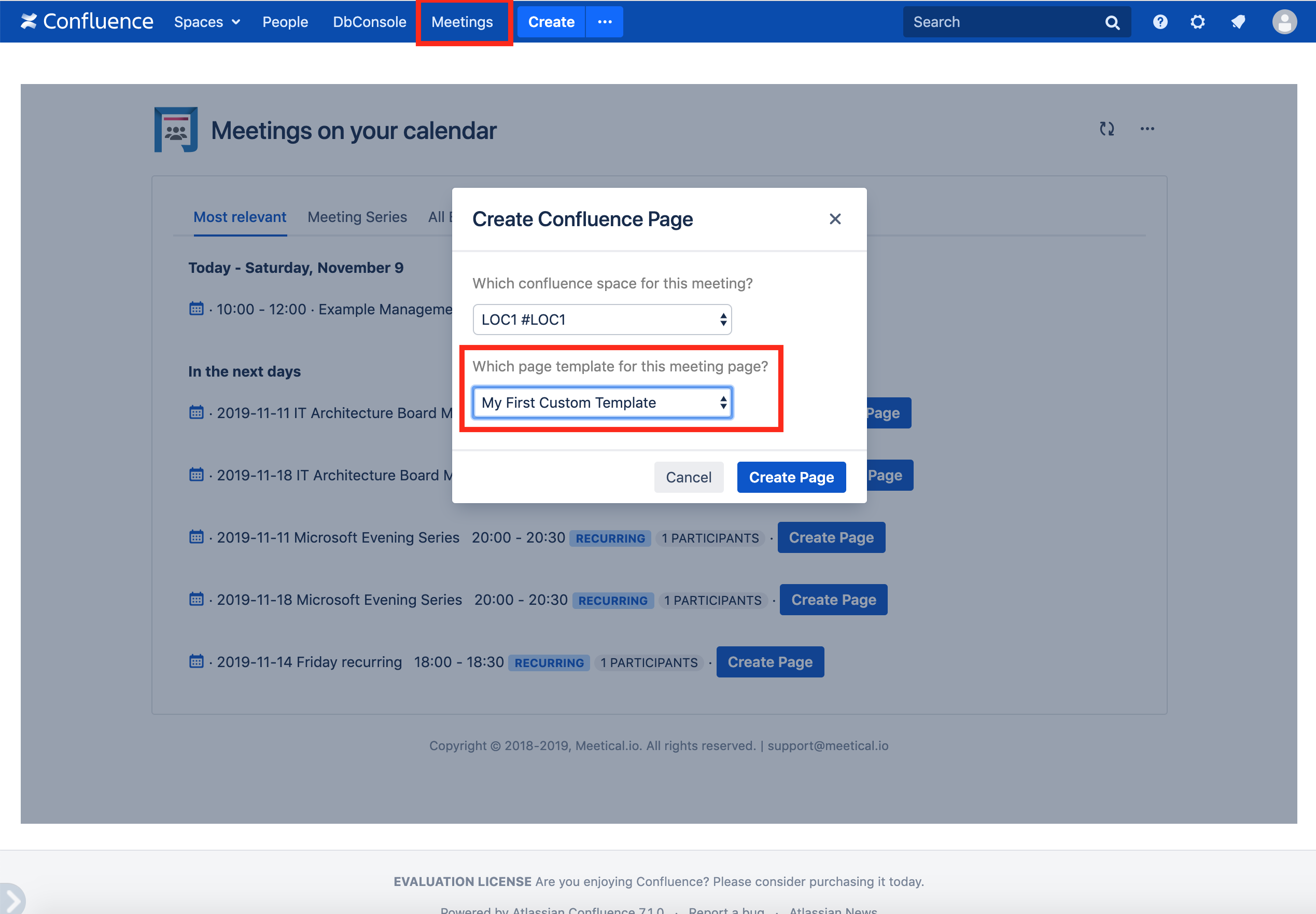
- Navigate to Meetings in Confluence.
- Choose the template when you create a page.
- Create the page.

- This is how the resulting template will look like.
- The right part is automatically populated the rest of the page free to edit.
In the following let's look how we can further customize our templates.
And now, what else can you do? Here is the list of Macros currently available.




